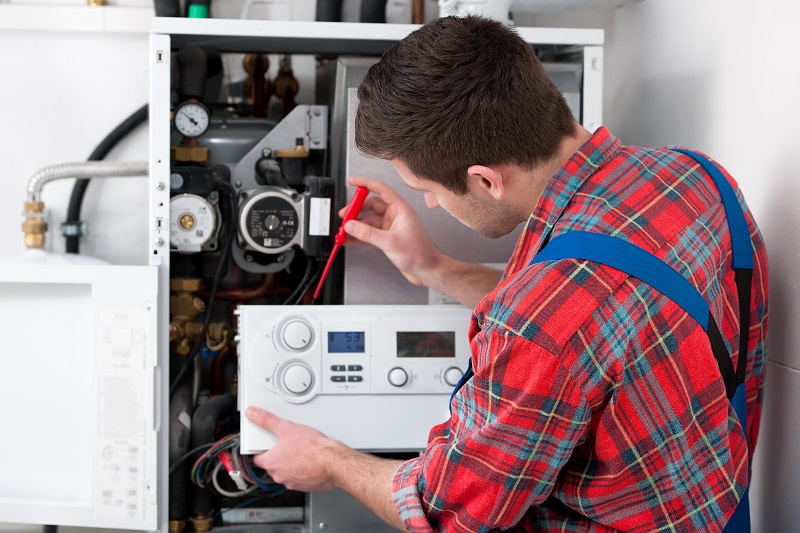
Heat is distributed through your home in a selection of methods. Forced-air systems utilize ducts that can additionally be made use of for central air conditioning and also heat pump systems. Radiant heat systems likewise have special heat circulation systems. That leaves 2 warmth circulation systems-- steam radiators as well as hot water radiators.
Heavy steam Radiators
Heavy steam home heating is among the oldest home heating modern technologies, however the process of boiling and condensing water is naturally less reliable than even more modern-day systems, plus it usually deals with substantial lag times between the central heating boiler switching on and also the heat getting here in the radiators. As a result, heavy steam systems make it difficult to implement control methods such as a night obstacle system.
The initial central heater for buildings made use of vapor distribution because steam steps itself with piping without the use of pumps. Non-insulated steam pipes commonly provide unwanted heat to unfinished areas, making fiberglass pipe insulation-- which can hold up against high temperatures-- very cost-efficient.
Normal upkeep for heavy steam radiators relies on whether the radiator is a one-pipe system (the pipeline that supplies heavy steam likewise returns condensate) or a two-pipe system (a different pipe returns condensate). One-pipe systems make use of automatic air vents on each radiator, which bleed air as heavy steam fills up the system and then closed immediately when vapor reaches the vent. A clogged up air vent will certainly maintain a steam radiator from warming up. An air vent stuck open enables steam to continually escape to the living space, raising loved one humidity as well as losing fuel. Air vents can occasionally be cleaned up by steaming them in a water as well as vinegar remedy, yet generally require to be replaced.
Steam radiators can additionally warp the floor they are remaining on as well as their thermal expansion and also tightening gradually can dig ruts into the flooring. Both of these results can trigger the radiator to tilt, protecting against water from appropriately draining from the radiator when it cools. This will certainly trigger banging noises when the radiator is warming up. Shims need to be put under radiators to pitch them a little towards the pipe in a one-pipe system or towards the vapor trap in a two-pipe system.
In two-pipe systems, older vapor catches commonly embed either the open or shut setting, shaking off the balance in the system. If you appear to have problems with some radiators offering too much warm as well as others giving too little, this might be the cause. The most effective technique is commonly to just replace all the heavy steam catches in the system.
Steam radiators situated on outside walls can create warmth loss by emitting warmth with the wall to the outdoors. To stop such warm loss, you can mount warm reflectors behind these radiators. You can make your own reflector from foil-covered cardboard, available from numerous structure supply shops, or by mounting foil onto a foam board or other similar shielding surface area. The aluminum foil should encounter away from the wall, as well as the reflector needs to be the same dimension or slightly larger than the radiator. Regularly tidy the reflectors to maintain optimal heat reflection.
Hot Water Radiators
Hot-water radiators are one of the most common warmth distribution systems in more recent residences, 2nd only to forced-air systems. They are normally a baseboard-type radiator or an upright style that resembles heavy steam radiators. The most typical trouble in hot-water systems is unwanted air in the system. At the start of each home heating season, while the system is running, go from radiator to radiator as well as open each bleed shutoff a little, then close it when water starts to get away through the valve. For multi-level homes, start on top floor and work your means down.
One way to save energy in hot-water systems is to retrofit them to provide different zone control for various areas of large homes. Zone control is most effective when large locations of the house are not utilized frequently or are made use of on a different routine than other parts of the house. A heating expert can install automatic valves on the hot-water radiators, managed by thermostats in each zone of the house. Utilizing programmable thermostats will certainly enable you to instantly heat and cool off sections of your residence to match your use patterns.
Zone control functions ideal in homes made to run in various heating areas, with each area shielded from the others. In homes not designed for area control, leaving one area at a lower temperature can create comfort troubles in adjacent rooms because they will certainly lose heat to the cooler parts of the house. Zone control will additionally work best when the cooler areas of the home can be isolated from the others by closing doors. Sometimes, brand-new doors might be needed to separate one location from one more. Cooler parts of the residence need to be kept around 50 ° F to avoid water pipes from cold. Never ever turn off warm totally in an extra part furnace replacement reviews of your residence.